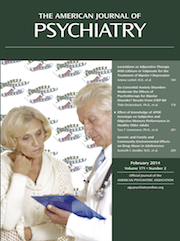Few topics in psychiatry have received as much attention in the mainstream media recently as autism and attention deficit hyperactivity disorder (ADHD). As these and other neurodevelopmental disorders are more widely recognized, families, educators, and health care providers seek to become familiar with these disorders and their treatments. Staying apprised of the recent developments in this rapidly expanding field, while locating the useful and high-quality resources amid the misinformation, can be challenging.
Thanks to editors Drs. Robin Hansen and Sally Rogers and their collaborators from the MIND (Medical Investigation of Neurodevelopmental Disorders) Institute at the University of California Davis, their book, Autism and Other Neurodevelopmental Disorders, serves as both an introduction and guide for health care professionals seeking more information on these important topics. The editors achieve their stated goal of providing a clinically useful book for providers in both primary and subspecialty care who routinely see this population. In addition to chapters on autism and ADHD, the book covers a range of neurodevelopmental disorders, including Fragile X syndrome, 22q11.2 deletion syndrome, Tourette’s syndrome and tic disorders, Down’s syndrome, Angelman and Prader-Willi syndromes, and Williams syndrome. There are also chapters on sex chromosome disorders, learning disorders, and speech and language disorders.
The introductory chapter on autism spectrum disorders by the editors, along with Sally Ozonoff, Ph.D., is brief (only 20 pages) but covers a lot of relevant material. Although the book was published prior to the release of DSM-5, the authors review changes in diagnostic criteria from the pervasive developmental disorders (now collectively autism spectrum disorders) we knew in DSM-IV-TR. They outline the scientific rationale for the change: 1) the failure of studies to find meaningful distinctions among the various pervasive developmental disorder conditions, 2) the demonstration that the various pervasive developmental disorder conditions are genetically similar, and 3) the movement from one category to another over time. They give examples, which are helpful when explaining the changes to families.
In addition to diagnostic criteria, the authors cover the importance of early detection and appropriate assessment. From a clinical perspective, I appreciated the authors’ guidelines regarding medical assessment when a child is suspected of or diagnosed with an autism spectrum disorder. Along with a very thorough medical and family history, physical and neurologic examinations are considered the standard of care with a new autism diagnosis, and they are critical to recognizing genetic syndromes highly associated with autism spectrum disorders or other neurologic abnormalities. Solid history taking and physical examination may reveal a need for metabolic studies, hearing/vision examinations, or other findings that can direct care and significantly affect long-term prognosis. In psychiatry, it is rarely imperative to order genetic testing on every patient we diagnose. However, the authors do recommend obtaining a chromosomal microarray for all individuals diagnosed with an autism spectrum disorder, pointing out that chromosomal abnormalities and de novo copy number variants are implicated in 10%−20% of autism spectrum disorder cases. This may be a point of argument among providers and families wondering whether an abnormal microarray would affect treatment decisions. The authors do not expand on this recommendation further, although one can imagine that with ongoing research in autism genetics, chromosome studies will become more clinically relevant in the future and prove significant for affected families and treatments that emerge. They discourage routine MRIs and EEGs, acknowledging that while seizures may occur in 25%−30% of individuals with autism spectrum disorders, without clinically relevant symptoms these tests have not proven useful to aid diagnosis and management.
Another strength of the autism spectrum disorders chapter is that there are pages dedicated to common family issues that occur in the context of diagnosis and ongoing care of a child with autism, as well as tips on how best to support families, including how to talk about prognosis. The authors stress that “the message to parents that [autism spectrum disorder] is a severe and lifelong disorder is no longer accurate. [Autism spectrum disorder] has a very wide range of outcomes, and persons with [autism spectrum disorder] of all ages and all levels of functioning are responsive to well-delivered, empirically supported treatment and education” (p. 20). The authors include practical tips on how to make referrals for services that avoid putting both families and agencies in adversarial relationships (for example, suggesting that providers recommend “empirically supported teaching practices for communication, social, and academic skill development” instead of “3 hours per week of speech therapy,” etc. [p. 12]).
Each additional chapter adheres to a similar outline, covering the history of the disorder, signs and symptoms (often including pictures when meaningful), epidemiology, etiology, diagnostic criteria, assessment and differential diagnosis, psychiatric and behavioral comorbidities, and available interventions. Where most “current” texts suffer the risk of becoming quickly outdated, the authors point out relevant websites and resources that may be more frequently updated over time. The “New Research Directions” section at the end of each chapter is of particular interest, allowing authors to showcase new developments that lie ahead for the field. The chapter on Fragile X syndrome provides a readable review of Fragile X genetics, while relating it to ongoing research of targeted treatments based on Fragile X neurobiology. These advances have led to several states piloting newborn screening programs to enhance early identification of Fragile X syndrome and early intervention, potentially a model for other neurodevelopmental disorders at some point.
While this is not a comprehensive text, what the authors and editors have accomplished in this volume of more than 300 pages is perhaps even more difficult: creating a useful, readable, and enjoyable resource that can be appreciated by a wide audience. It will be a valuable guide when collaborating on multidisciplinary treatment plans, speaking with families about resources for their child, and answering difficult questions. It is hard to overlook that this contribution was created by people strongly devoted and passionate about the work they do, with the clear purpose of enhancing care for a special and important population … a key sentiment to accompany this worthwhile read.

